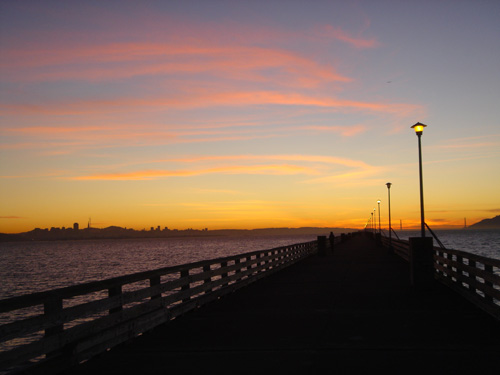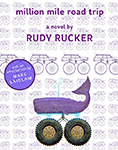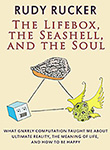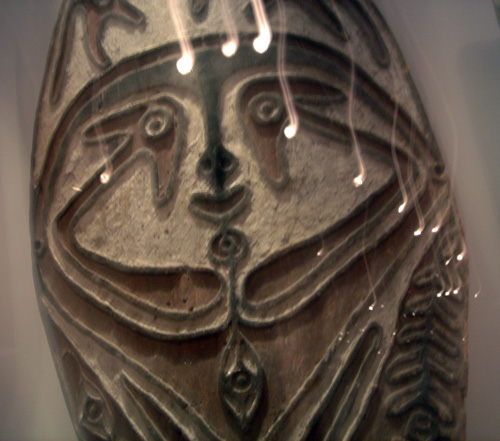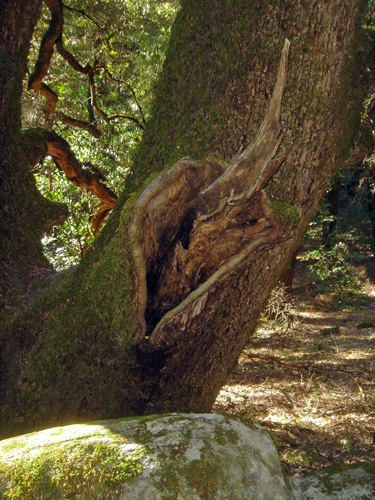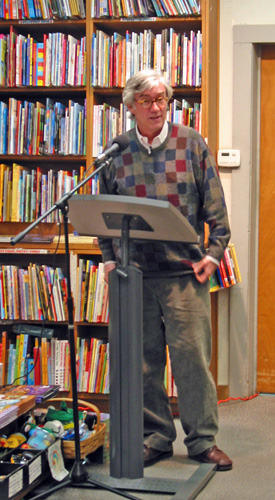
I taped my readings at Booksmith in the Haight in San Francisco and at Black Oak Books in Berkeley. Rather than podcasting the whole readings, I’m just putting up the question-and-answer sessions at the tail ends of the two readings. In some ways the Q&A, being a one-time event, is the most interesting part of a reading. Click on the icon below to access Rudy Rucker Podcasts. with these two Q&A sessions.
I’m still getting my taping skills back together, and there’s some noise from the lavolier mike bumping my sweater. The sound quality is slightly better in the Black Oak reading than in the Booksmith reading .
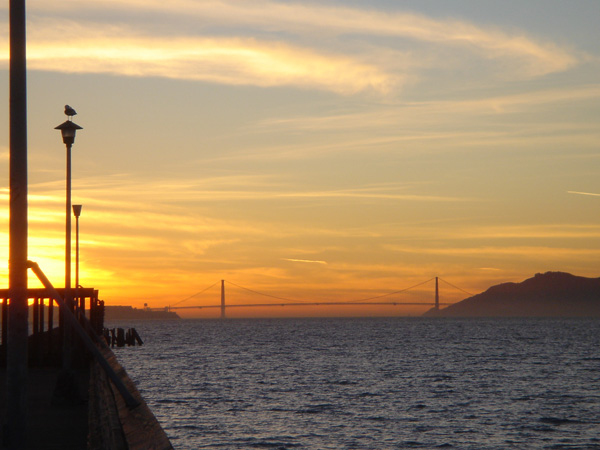
Before the talk, I hung out with fellow SF writer Terry Bisson; we walked out on this really long pier off the Berkeley Marina — into the setting sun. Terry said this was a symbol of our current status in life.
I got to hang out with my son Rudy and his wife Penny a little bit, too. More upbeat than Terry! And Queen Mu of the Mondo 2000 days turned up at the reading.

[Mustard spoons.]
Lately I’ve been reading Hieronymus Bosch: The Complete Paintings and Drawings, by Jos Koldeweij, Paul Vandenbroeck, Bernard Vermet, (Abrams, 2001). I plan to put him into my PS2 novel. The quotes I post today are all from this Bosch monograph.
Bosch as panpsychist: “Bosch painted all kinds of objects from the life with great precision, as can be seen in the musical instruments [including a harp] that appear in the Hell scene from the Garden of Earthly Delights. He also produced detailed ”˜portraits’ of jugs, plates, knives and other utensils. It is in this degree of realism that the difference lies between copies of Bosch and his own work. The imitators cannot match his quality, reducing real objects to tokens.”

“Bosch’s work is… simultaneously cryptic and inaccessible, yet totally open, with the lowest of thresholds. This is painting for both the most serious art-lovers and for those who virtually never visit a museum…”
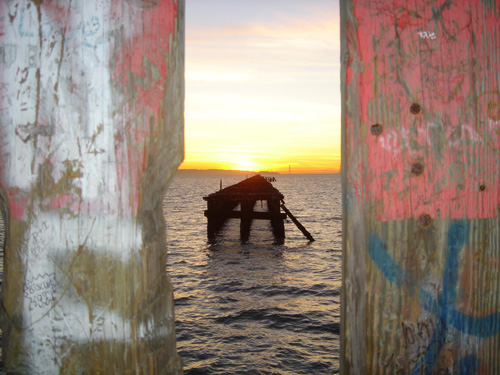
Bosch was born around 1450, on the market square in a house of his father Anthonius van Aken, son of Jan, who was son of Thomas — all three previous generations were artists. His brothers Goossen and Jan were artists as well. By 1481 he was married to Aleid van de Meervenne, daughter of a wealthy merchant’s family. He joined the upper crust Confraternity of Our Lady in 1488, and hosted a swan dinner of the Confraternity of Our Lady in July, 1488, in July 1498, and again on March 10, 1510, when he served fish. His funeral ceremony took place in on August 9, 1516. He might have died from a deadly cough that swept the town around then.

[Terry Bisson in the waning light.]
“The donor’s portraits in original Bosch paintings like the Last Judgment in Vienna have been overpainted, probably by the artist himself… Relations with his customers were evidently strained at times…”
